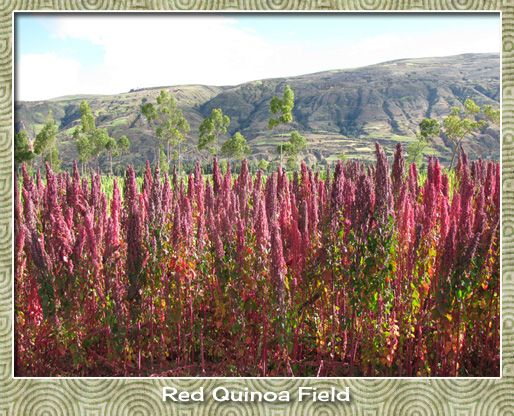1-1/2 cups quinoa, rinsed
5 pickling cucumbers, peeled and cut into 1/4" cubes
1 small red onion, cut into 1/4" cubes
1 large tomato, cored, seeded and diced
1 bunch Italian parsley leaves, chopped
1 bunch mint leaves, chopped
1/2 cup extra-virgin olive oil
1/4 cup red wine vinegar
1 lemon, juiced
1-1/2 tsp. salt
1 tsp. freshly ground black pepper
Romaine lettuce, wash and separate leaves
1 sliced avocado
Bring water to a boil in a large saucepan. Add the quinoa, stir once and return to a boil. Cook, uncovered over medium heat for 12 minutes. Strain and rinse well with cold water, shaking the sieve well to remove all moisture.
When dry, transfer the quinoa to a large bowl. Add the cucumbers, onion, tomato, parsley, mint, olive oil, vinegar, lemon juice, salt and pepper and toss well.
Spoon onto romaine lettuce leaves, top with avocado slices and serve.
I love this salad so much, there's no way to describe how much I love it. AND, it's good for you. Read on if you're interested in quinoa's nutritional value:
About Quinoa
"...Derived from the Spanish spelling of the Quechua name kinwa or occasionally "Qin-wah", Quinoa originated in the Andean region of Ecuador, Bolivia, Colombia and Peru before they were colonized and became nation-states, where it was successfully domesticated 3,000 to 4,000 years ago for human consumption, though archeological evidence shows a non-domesticated association with pastoral herding some 5,200 to 7,000 years ago.
Quinoa was of great nutritional importance in pre-Columbian Andean civilizations, secondary only to the potato, and was followed in importance by maize. In contemporary times, this crop has become highly appreciated for its nutritional value, as its protein content is very high (18%). Unlike wheat or rice (which are low in lysine), and like oats, quinoa contains a balanced set of essential amino acids for humans, making it a complete protein source.[13] It is a good source of dietary fiber and phosphorus and is high in magnesium and iron. Quinoa is gluten-free and considered easy to digest. Because of all these characteristics, quinoa is being considered a possible crop in NASA's Controlled Ecological Life Support System for long-duration human occupied spaceflights..." ~Wikipedia
| Nutritional value per 100 g (3.5 oz) | |
|---|---|
| Energy | 1,539 kJ (368 kcal) |
| Carbohydrates | 64 g |
| - Starch | 52 g |
| - Dietary fibre | 7 g |
| Fat | 6 g |
| - polyunsaturated | 3.3 g |
| Protein | 14 g |
| Water | 13 g |
| Thiamine (vit. B1) | 0.36 mg (31%) |
| Riboflavin (vit. B2) | 0.32 mg (27%) |
| Vitamin B6 | 0.5 mg (38%) |
| Folate (vit. B9) | 184 μg (46%) |
| Vitamin E | 2.4 mg (16%) |
| Iron | 4.6 mg (35%) |
| Magnesium | 197 mg (55%) |
| Phosphorus | 457 mg (65%) |
| Zinc | 3.1 mg (33%) |
|
Source: USDA Nutrient Database
| |


No comments:
Post a Comment